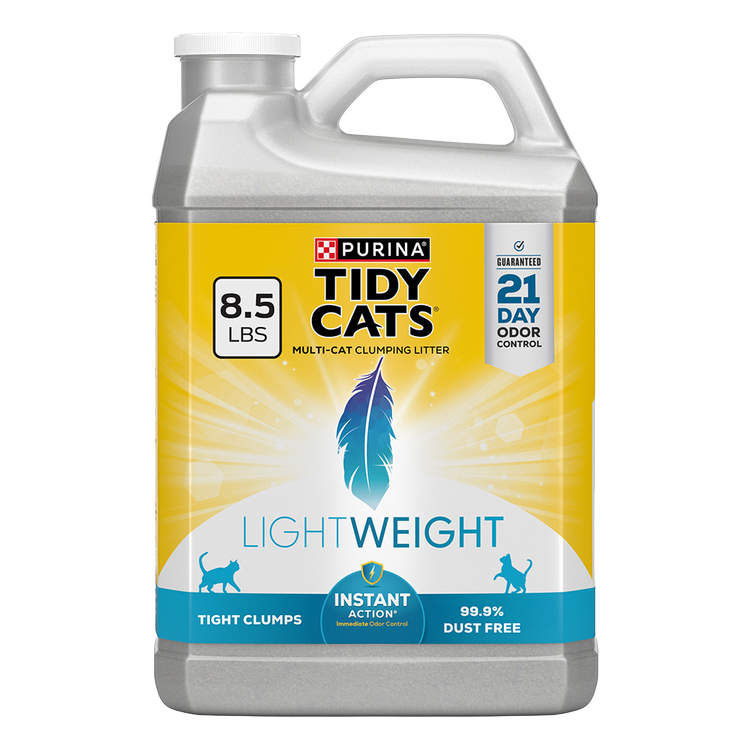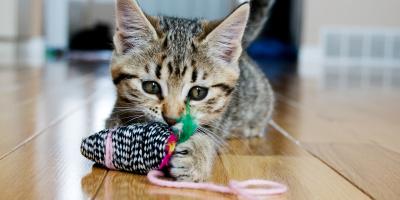Kitten Training: How & When to Litter Train a Kitten


A kitten that won’t use the litter box is one of the most frequent concerns kitten owners bring up to their veterinarians. But overall, training a kitten to use a litter box is much easier than training an adult cat to do so. Most kittens will naturally start using a litter box if the environment is set up properly. All it takes is a few simple steps to set them up for success. Read on for helpful tips to make litter box training a breeze.
When Can You Start Litter Training a Kitten?
When kittens are first born, their mother will prompt them to eliminate and take care of the cleanup afterwards. If your kitten has spent time with their mother in the early weeks, they may have learned how to use the litter box from their mother.
Regarding when you can start litter training a kitten, you can start training right away unless you bring your kitten home at a very young age. At four weeks of age or less, kittens are often weaning from their mother and will make the transition to a kitten-friendly litter box. This is when the process of how to litter box train a kitten will begin.
How to Litter Train a Kitten
1. Choose a Litter Box
The size of the litter box is important. If you buy a box that’s too big, it can be a physical challenge for a kitten to get into, which might prevent them even entering the box. A box that measures 13 inches by 9 inches is a good size to start. It’s also a good idea to purchase a box that is lower sided or has a ramp to make it easier for your cat to climb into.
Avoid any litter boxes that have covers or hoods until your kitten is used to the litter box. This can be a barrier for your kitten, making it difficult to access the place they need to do their business.
2. Choose a Litter Type
The type of litter you choose makes a difference when it comes to how to potty train a kitten. There are many choices in the litter aisle, but kittens usually take to more sand-like litter, since that is what they’d naturally choose in the wild. Start with a sandy litter to give your cat the best possible start on litter box training. Once they’re successful, you can transition them to other litter types while they’re still young and most flexible.
Below is a list of litter types to help you navigate your choices once your kitten is successful with sandy litter.
- Clumping litter – convenient and easy to scoop (but not recommended for kittens as they may ingest clumping litter)
- Sand or clay – highly absorbent and affordable but generally won’t eliminate smells
- Wood chip or sawdust – highly absorbent with odor control but slightly more expensive
- Silica based – absorbs liquids quickly but is one of the most expensive options
- Scented – available option, but note that it may irritate your kitten’s sensitive nose
3. Plan a Litter Box Location
The next step for how to train a kitten to use a litter box is to decide on a single location. Place the litter box in an area that is quiet without distractions. Create a space for privacy where they can use the litter box comfortably. Hallways or laundry rooms where the washer and dryer can make loud noises are typical places to avoid. You’ll also want to keep the litter box far away from their food and water bowls.
Easy access is important, so make sure to remove any obstacles or barriers that could get in the way of your kitten getting to the litter box with ease. Be sure to limit how much your cat can move around your home early on during training. Once your kitten is familiar with going in the litter box, you can then expand the litter box locations to various rooms.
4. Introduce Your Cat to the Litter Box
Now it’s time to make the official introduction.
- Look for Signs That Your Kitten is Ready to Potty
This often looks like sniffing, scratching or crouching on the floor. You might also see them nose around in corners looking for a place to “go”. - Place Them in the Litter Box
Once you’ve spotted the signs, gently lift your kitten into the litter box. Also note that kittens have small bladders, so a prime time for placing them in the box is soon after they’ve finished eating. - Give Praise
Whether you placed the kitten in the litter box or they went there on their own, reward their good behavior after they eliminate with praise or a tasty treat. You’ll want to praise them in a positive, yet calm, manner. Avoid startling them. They’ll eventually learn that using the litter box is a positive behavior that will eventually turn into a habit.
Other Helpful Tips for How to Litter Train a Kitten
After following the basic steps for how to potty train a kitten above, you’ll want to keep the next tips in mind.
- Keep the Litter Box Clean
A clean litter box will prevent your kitten from eliminating elsewhere in your home and keep them coming back to the box to urinate and defecate, so prioritize its cleanliness to avoid unwanted mishaps. If using a clumping litter, scoop once a day and refill the box to maintain proper depth. For non-clumping litter, do a daily scoop of the solid waste and replace all the litter in the box. For multiple kittens, you’ll need to do this more often. The box itself will need regular cleaning with scent-free soap and water about once a month. - Be Patient
The key to your kitten’s litter training success also includes your patience. Know that accidents will happen, but never punish your kitten for not using the litter box. Although it can be frustrating, your positivity and persistence will pay off if you follow the proper steps. Creating a negative experience for your kitten during this important training period can instill fear and stress, which are ultimately things you want to avoid at all costs, especially given a kitten’s young age. Punishment can also create setbacks during training making it harder to reach the goal of achieving litter box comfort and accident-free elimination. - Prevent Setbacks
If your kitten goes in an unwanted area, be sure to thoroughly clean the spot. Doing so will help make sure your kitten isn’t retriggered to go in the same spot by the scent of the previous accident which could develop into an unwanted behavioral pattern.
For more expert tips on training your kitten, explore our kitten training page. And to explore kitten training even further, get all the tips right on your phone by downloading the myPurina app.

Be Rewarded for Your Purina Purchases
Earn and redeem points for Purina products with myPurina app.






